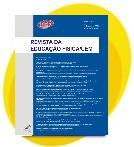Effect of different interval training protocols on adiposity indicators in overweight-obese children and adolescents: a systematic review and meta-analysis
Abstract
The present meta-analysis verified the impact of different protocols of high-intensity interval training (HIIT) on indicators of adiposity in overweight and obese children and adolescents. Searches were performed in the databases: PubMed, ScienceDirect, SPORTDiscus, LILACS and SciELO. Were included studies without caloric restriction that aimed to verify the effect of HIIT interventions on the adiposity indicators in overweight children and adolescents published until December 2018. The PEDro scale was used to assess the risk of bias. The meta-analysis was conducted in the Revman software using standardized mean difference (SMD) data and 95% confidence intervals (CI). Seventeen studies were selected, which involved 289 children and adolescents with overweight and obesity. HIIT interventions (mean=11.7±5.9 weeks) produced significant decreases in body fat percentage (SMD=-0.65; CI=-1.07, -0.23) and waist circumference (SMD=-0.34; CI=-0.49, -0.18). Also, major relative risk of decrease in body fat percentage were observed in favour to protocols with work/recovery interval ratios of 1:1 and 2:1. HIIT protocols with ratios (work/recovery intervals) 1:1 and 2:1 promote significant reductions in fat percentage and waist circumference in overweight and obese children, independently of the total work time.
Downloads
Copyright (c) 2020 Journal of Physical Education

This work is licensed under a Creative Commons Attribution-NonCommercial-NoDerivatives 4.0 International License.
• Authors retain the copyright and full publishing rights without restrictions.

This work is licensed under a Creative Commons Attribution 4.0 International License.













_1502.jpg)











